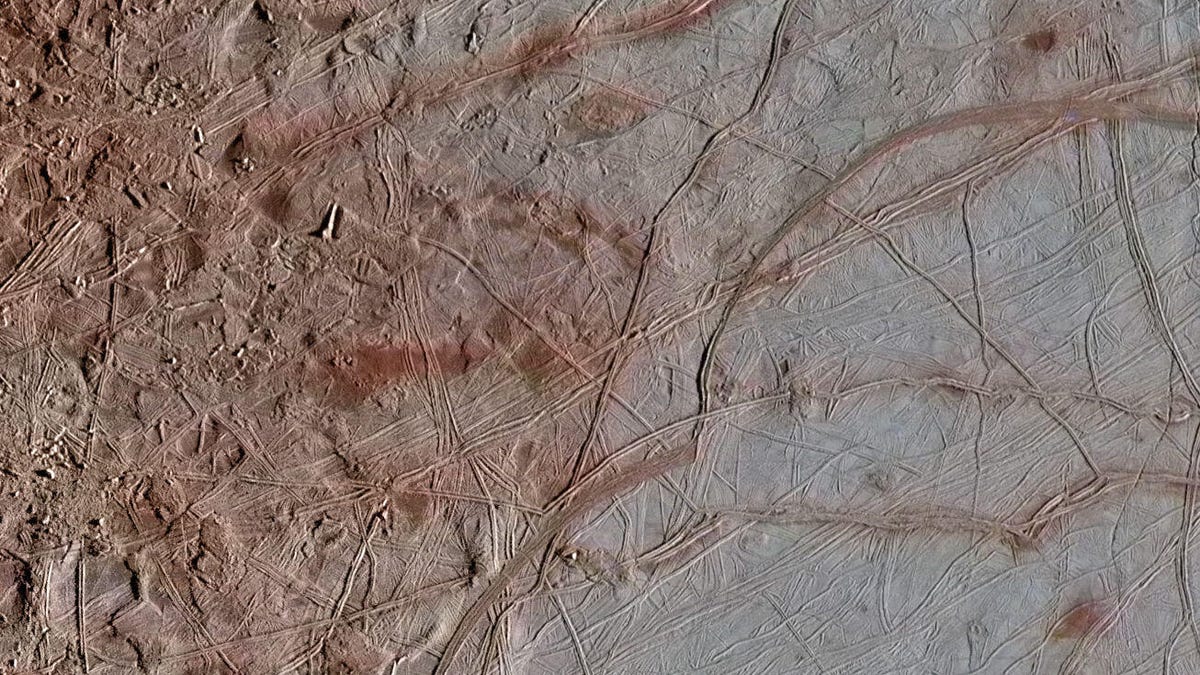NASA zooms in on Jupiter moon Europa's bewildering 'chaos terrain'
The space agency used modern image processing to turn '90s spacecraft views into stunning new studies of Europa's wild surface.
Jupiter's funky moon Europa represents one of our best shots at finding signs of life beyond Earth in our solar system. NASA will be sending a future mission to study icy Europa, but in the meantime we can lose ourselves in some fresh versions of old images taken by the Galileo spacecraft in 1998.
One of several newly reprocessed images that show Galileo's view of Jupiter's moon Europa. This is from an area called Crisscrossing Bands.
On Thursday, NASA released three newly reprocessed Galileo views highlighting the moon's "chaos terrain," which looks like a cross between ice crystals and frenzied scratch marks.
The space agency revisited the older imagery in preparation for sending the Europa Clipper mission for a visit. Clipper is expected to launch as early as 2023.
These images aren't quite what we'd see if we visited Europa in person. NASA processed the images to enhance the color and make landscape features stand out. "Areas that appear light blue or white are made of relatively pure water ice, and reddish areas have more non-ice materials, such as salts," the agency said.
Scientists are curious about how Europa's relatively young surface formed. "Areas of so-called chaos terrain contain blocks that have moved sideways, rotated or tilted before being refrozen into their new locations," said NASA.
The Galileo mission ended in 2003 when the spacecraft dove into Jupiter's atmosphere. Europa Clipper will pick up where Galileo left off. It'll also look for signs that Europa could possibly be hosting some form of life. There may be more than chaos lurking in the moon's strange terrain.


